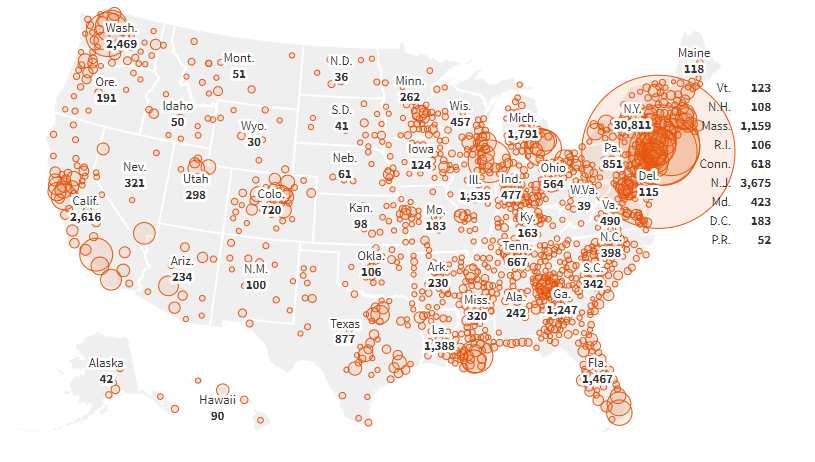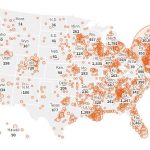Coronavirus live updates: Facebook releases county-by-county maps of COVID-19 symptoms across the United States

Facebook has released its first county-by-county maps of people with COVID-19 symptoms. The map, which only shows an estimated percentage of people with COVID-19 symptoms, does not report confirmed cases. The social giant uses aggregated public data from a survey conducted by Carnegie Mellon University (CMU) Delphi Research Center. Facebook doesn’t receive, collect or store individual survey responses. The map is also not intended for diagnostic or treatment purposes, or for guidance on any type of travel.
Facebook said the map is designed with privacy in mind from the start while providing new ways to help researchers and experts understand this crisis. Facebook CEO Mark Zuckerberg said the goal is to give state officials a sense of where they may need to direct resources, such as personal protective equipment, or PPE.
“Overall, since experiencing symptoms is a precursor to going to the hospital or becoming more seriously ill, these maps could be an important tool for governments and public health officials to make decisions on how to allocate scarce resources like ventilators and PPE, and eventually when it’s safe to start re-opening society,” Zuckerberg said.
The maps add to a growing list of tech companies developing different apps to control the spread of coronavirus across the United States. Early this month, both Apple and Google announced the development of a system for smartphone-based contract tracing.
Facebook is inviting people to participate in a survey conducted by Carnegie Mellon University Delphi Research Center, and over a million people responded to this survey within the first two weeks. The survey from CMU Delphi Research Center asks people to self-report symptoms associated with COVID-19 or the flu that they or anyone in their household has experienced in the last 24 hours. Surveys like this have been used globally for public health research. Even with as few as several thousand responses, survey data like these have been successfully used to forecast the spread of the flu and other illnesses

